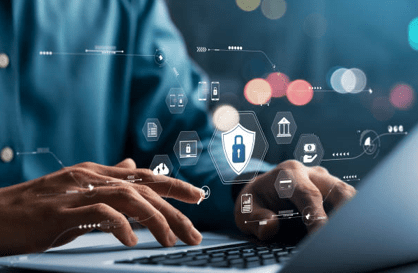Cyber security over the course of the last decade has rapidly made the progression from being a luxury of the western world to a necessity to the everyday man and more especially Organizations.
The cyber security space encapsulates various complex solutions, tools, standards and frameworks addressing various gaps and risk that may arise. However, amidst this technological evolution, it’s imperative to recognize that people are often perceived as the weakest link in the IT landscape when it comes to cybersecurity.
Despite the progress made in technology and the implementation of strong security protocols, the digital domain continues to be susceptible to vulnerabilities, including human error and social engineering tactics. Humans are occasionally the weakest link in IT security for the following reasons:
Lack of awareness:
In 2023 there were 2,365 cyberattacks with 343,338,964 victims according to Forbes advisor. From this we see an overview of the magnitude of people vulnerable to cybersecurity attacks. This state can be attributed to a lack of awareness amongst employees and the public in general, making them prone to social engineering techniques like phishing where victims are manipulated into exposing sensitive information. The remedy to this is to plan and regularly embark on cyber security awareness campaigns which will eventually have the ripple effect of creating a society or workforce with a strong foundation in cyber security.
Phishing and Social Engineering:
Phishing and Social Engineering attacks have become more rampant in cyberspace. Phishing attacks are mostly executed by presenting links that look legitimate but are malicious to users to infect user systems and steal sensitive information. Just like in the analogy of a fish being caught using bait by a fisherman, Human curiosity, trust, and susceptibility to manipulation make them prime targets for these attacks. Human vigilance and the ability to recognize phishing attempts are critical for preventing successful attacks.
Weak password:
Passwords are your key or access to your digital ecosystem which should emphasize the need to create and maintain a strong and complex password culture. The fact remains, though, that most of us repeat passwords across several accounts and use ones that are easy to guess. This opens the door for hackers to potentially obtain sensitive information through compromised accounts and systems. Encouraging strong, unique passwords and implementing multi-factor authentication (MFA) can enhance security.
Social Media and Oversharing:
The need for oversharing on social media has become rampant in today’s society. Social media has slowly become a safe haven for our generation and internally or unintentionally divulges a lot of personal information on various platforms. People frequently share personal information on social media platforms, making it easier for cybercriminals to gather details that can be used in attacks, such as spear-phishing.
Lack of Vigilance:
Humans may not be as vigilant as automated security systems in monitoring unusual or suspicious activities. This means that attackers can go undetected for longer periods. Hence it is everyone’s responsibility to be vigilant within the organization. All suspicious activity shall be reported and investigated upon detection.
Insider threat:
Businesses’ security can be seriously compromised by careless or malicious staff. Insider threat is a situation where individuals (employees, interns, third-parties or partners) of an organization with legitimate access, misuse their access whether intentionally or not. Workers that are privy to sensitive information run the risk of inadvertently or maliciously mishandling it. Efficient access control, access rights review and user activity monitoring can help reduce Insider risks.
Overconfidence and Complacency:
Some people tend to grow complacent, overconfident, reluctant and relaxed in their safeguards and measures against cyberthreats, leading to them believing they are immune to attacks. Leaks in security might result from this arrogance. 100% security is never guaranteed, always be alert.
Bring your Own Device and mobile device usage:
Allowing employees to use personal devices within an organization raises significant security concerns. When staff access corporate systems and information using their own devices, it introduces risks to the business. Companies often have limited control over personnel’s personal devices. To mitigate these risks, businesses should establish policies governing mobile device usage, including specific rules for personal device use.
Human Errors:
Accidental mistakes, like sending private information to the wrong person or setting up security incorrectly, can cause security problems. These mistakes can be avoided or minimized by prioritizing awareness across organizations.
Conclusion:
While humans are often considered the weakest link, it’s important to note that they are also an essential part of cybersecurity defense. With proper training, awareness, and education, individuals can become a valuable line of defense against cyber threats. Hence the need for Cybersecurity awareness programs and forums, trainings and extensive publicity on cyberthreats by organizations.










